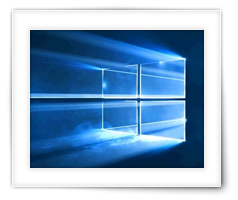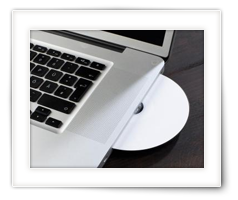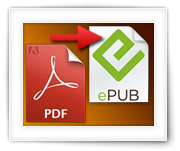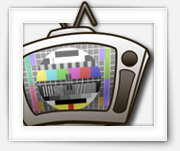Sometimes you just want to try a new application without messing up your Windows setup, or maybe you found an application online, and you’re not quite sure how sketchy the application is (with all the malware, viruses etc. these days).
In this article, I’ll show you how to use the sandbox functionality found in Windows 10, to safely test applications in a shielded (sandbox) environment.
Note: This only seems to be available for Windows 10 Pro or Enterprise, as of version 1903, (it first became available in the Insider build 18305).
Ad Blocking Detected Please consider disabling your ad blocker for our website.
We rely on these ads to be able to run our website.
You can of course support us in other ways (see Support Us on the left).
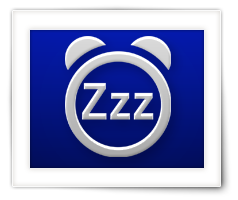
Waking up devices that are network connected, can be done with the so called “Wake On LAN” feature provided by certain devices (like for example a NAS, FileServer, or even a PC). A while back I created a simple application for this – miniWOL – keeping in mind that the user may not be too familiar with all the configuration details (see: previous miniWOL versions).
I wanted just a simple menu in the System Tray (Windows: next to the clock, usually the lower-right corner of your screen) or Menubar (MacOS X – top of your screen, Linux often at the bottom of your screen). Well, after a bit of searching I could not find anything suitable or to my liking and I decided to just write something myself.
The old miniWOL has been good so far, and plenty folks seem to have a good use for it privately and professionally. However, Apple had to change a few things (moving to 64 bit, using Cocoa instead of Carbon, and the need to sign and notarize applications – I suspect Microsoft will probably follow soon) so while revamping the Mac version, I revamped the Windows version as well, and added a 64-bit Linux version as well (by request).
Rename My TV Series, a tool to rename tv series episodes, has been around for a while now, and it’s time for an update (the “old one” can still be found here). So I proudly present: Rename My TV Series 2 (RMTV).
Two of the main reasons for this new version are the needed update of the user interface and support for the new API of TheTVDB.com. But there is more; macOS users wanted a 64 bit version to avoid the 32 bit complaining and having the application signed was on the wishlist for them as well. Support for SSL (since theTVDB.com API requires this), the use of notifications and the support for a dark theme, the merging of 2 episodes, caching results, are a few of other desired or needed items.
I’m still striving to do as much cross-platform development as possible, so macOS, Windows and Linux users can use my tools, which means that this new version will be available for all these 3 platforms.
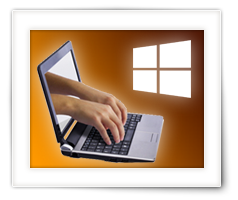
Ever needed to help a friend or family with their computer issues with remote access? Quick Assist is the way to go for Windows 10 users for remote assistance!
If you’re reading this, then there is a good chance that you’re looking at the same challenge I have every now and then; a friend or family member is having issue with their PC and if you can please help them … like right now! In that case (or when you live on a different continent) remote access is the way to go, unless you’re pretty close by.
In the past I used LogMeIn, it was probably the best tool I’ve every used for remote access, but unfortunately it’s no longer free or affordable.
For a while I’ve used TeamViewer, but in all honesty – I really dislike how the tool works even though it is free. The fact that both parties need to install software and those funny codes, weird screens, and sometimes confusing settings – well, it’s just not for me.
This weekend I had to assist my nephews, both of them using Windows 10. And again I was stuck with the same question: what tool to use?
Well not entirely … seems Windows 10 is equipped with everything we need and in this article I’ll show you how it’s done.
Ad Blocking Detected Please consider disabling your ad blocker for our website.
We rely on these ads to be able to run our website.
You can of course support us in other ways (see Support Us on the left).
When running Windows on your Mac through BootCamp, you might be searching for the CD/DVD Eject button every now and then, and back in the day (2009) I wrote a little application for that for my own use: BootCamp CD Eject.
This application works with all Windows version as of Windows XP – and you can use this without BootCamp as well.
This little application lives in the Windows Systray and allows you to eject a CD/DVD from a menu or through a key combination. There is also a key combination to quickly put your Windows in standby.
I’m posting the application (free!) since I recently ran into some users that actually had a use for it even 7 years after developing it.
Wake On Lan, the Ethernet standard for waking up (switching them ON) network enabled devices remotely, has (again) gained popularity, especially under NAS/Server users, who use their server or NAS only a few hours a day. Wether it’s to save on your Power bill, reduce your Carbon-Footprint, or to spare your equipment, Wake On Lan is here to stay …
Now come these question though,… how do I enable Wake On Lan on my network enabled device, and how do I send a “wake up” call to my device?
In this article, I’ll try to cover as much as I can – since it can be a pretty hairy process to setup Wake On Lan. It very strongly depends on the hardware and software capabilities of your device. Even though I cannot every device on the planet, I sure will try to help you get started with Wake On Lan.

I had not used the good old Wake On LAN option in a while, until my brother-in-law (Jean-Pierre) was looking for something like that to wake up his NAS.
Most of the Wake On LAN applications I found for him were just too extensive, too complicated, or not free. I wanted just a simple menu in the System Tray (Windows: next to the clock, lower-left corner of your screen) or Menu-bar (MacOS X – top of your screen). Well, after quite a bit of searching I could not find anything suitable or to my liking and I decided to just write something myself.
Timing couldn’t be better, since I just wanted to implemented Wake On LAN in another application – ConnectMeNow (for MacOS X).
Reusing the code, making it suitable for Windows and MacOS X, and wrapping it in a small application was done relatively quickly.
This application has been tested under MacOS X 10.11 (El Capitan) and Windows 10 and it’s FREE.
Ad Blocking Detected Please consider disabling your ad blocker for our website.
We rely on these ads to be able to run our website.
You can of course support us in other ways (see Support Us on the left).
Some of you may have read my article on how to Dual Boot Windows 8.x and Ubuntu 14.x … which works great, but what if you want to undo this; remove Ubuntu Dual Boot and remove the boot manager?
For example when you’ve decided that running Ubuntu from a USB stick is sufficient, or maybe run Ubuntu in a virtual machine with VMWare, Parallels, or VirtualBox. Or maybe you’re selling your computer and the new owner has no desire to have a Dual Boot on their “new” PC?
In this article I’ll show you how to remove the Dual Boot. I’m doing this based on the way I have installed Dual Boot, but it will very likely work for installations that have not followed my article. No additional tools are needed, like special applications, a repair or recovery CD or a live USB stick.
Do keep in mind though that this article is based on a computer that has a UEFI “BIOS” and not an old regular BIOS.
I usually work on a Mac, and when working under Linux or Windows, I resort to Virtual Machines (VMWare Fusion / Parallels Desktop).
Sometimes however, a virtual machine is not up to the task. For this purpose, I have a cheap Acer laptop that came with Windows 8.1. But that is just Windows. So how do I make this laptop dual boot Windows 8 and Ubuntu using Ubuntu 14.x and Windows 8.1?
These are the few easy steps I took to make my laptop dual boot Windows 8.1 and Ubuntu 14.x.
The described method can also be used to run Ubuntu from a USB stick, which works very well when using USB 3.0.
Most mobile devices can display PDF documents just fine. Some mobile devices, or at least the apps on these devices, show things just tad nicer when the document is formatted in the ePUB format.
In this article, for Windows, MacOS X and Linux, we will show you how to easily convert a PDF document to a ePUB document for use with your mobile device (Android, iPhone, iPad, etc) or computer.
Note : The tools used in this article also support other formats (Kindle, Doc, TXT, HTML, MOBI, etc.).
Ad Blocking Detected Please consider disabling your ad blocker for our website.
We rely on these ads to be able to run our website.
You can of course support us in other ways (see Support Us on the left).
In this article I will demonstrate how to put your signature on computer documents (PDF) without the need to print the document first, sign it with a pen, and scan it back to a PDF file.
Most modern PDF readers actually allow you to add a digitized image of your signature and common PDF readers even assist you with the scanning, either through a scanner or webcam.
For this purpose we will use Apple’s Preview (MacOS X), Adobe Acrobat Reader (MacOS X, Windows) or Xournal (Linux). All these applications are of course available for free.
For those of you who use their computer for watching TV-Series, the following problem must sound familiar:
Filenames are inconsistent, odd characters in the filenames, missing titles, weird numbering, etc… Finding the correct names and renaming them all manually can be quite labor intense.
Thats is one of the reasons why I wrote: “Name My TV Series”.
It’s available for free for Windows, Linux, and MacOS X.
The main information source it uses is TheTVDB.com which offers the data for free. The only thing they ask, is that, if you’re up for it, you help in maintaining the database with TV Series information.
Note: Name My TV Series can now also be found on AlternativeTo.net, AddictiveTips.com and the Lazarus Application Gallery …

